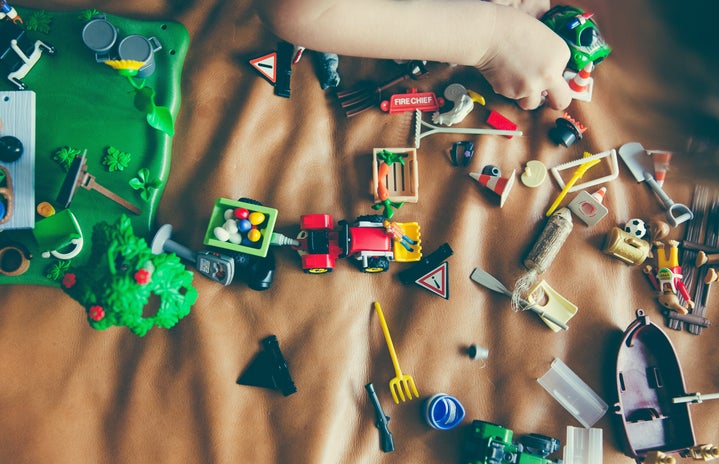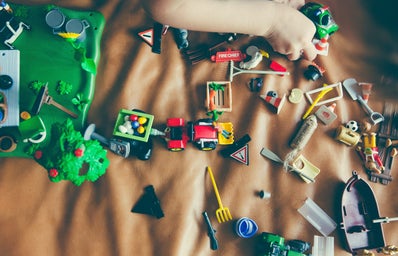The Coronavirus pandemic has left many of us in lockdown in our family homes. If your family is anything like mine, this has resulted in numerous ‘clear-outs’ of the various cupboards, drawers and even whole rooms that have been home to all the things without a home since before we were born. Whilst embarking on one such mission, I discovered an old Meccano set (other brands of construction toy are, of course, available) that had laid untouched since long before it was cleared out from my grandparents’ house. Fun, I thought. But that’s when I read the front of the box.
“Turning a boy’s world into a man’s world”.
I’m sorry, what?
What made this toy applicable for boys only? If I had played with it, would it have malfunctioned in some way? Did the makers honestly believe that a ‘woman’s world’ was made in a different (presumably less intellectually stimulating) way to a ‘man’s world’?

All of this got me thinking about the impact of gender-labelling on our children and the skills they develop. We’ve all heard the- unfortunately true- stereotype that boys are more likely to study and work in STEM-related sectors or managerial roles, whilst girls are more likely to study and work in more creative or caring industries. Amongst the many theories about why this happens is growing scientific evidence to support the idea that this issue begins long before a student decides what to study at university, or when they submit their first CV.
It comes back to the age-old argument: is it nature or nurture? Are we born with inherent intellectual strengths linked to our gender, or do the gender stereotypes enforced upon us from birth result in us developing some skills over others?
Studies have shown that babies have no preference towards toys labelled for a specific gender. To them, a toy is a toy. It is around ages 3-5 that children first have an awareness of gender, and they will subconsciously align themselves with people of the same sex. It is also around this age that children learn of the gender stereotypes inherent in society- they see that dresses are always worn by girls, and as such a dress becomes a signal to the child that the wearer must be a girl and must therefore conform to other traits that ‘all’ girls possess. The gender labelling of some colours means that we see boys levitating towards the blue box over the pink box of toys in a bid to conform with their other male friends. The contents of the box- and therefore what the child will play with- determines the skills learnt by that child. At such a young age, their brains are malleable and the skills taught lay the foundations for their later lives. So at this important point of the child’s life, what do we choose to give them?
For boys, we buy action figures, puzzles and construction toys.
For girls, we buy dolls, toy kitchens and coloured pens.
Is it no wonder that we see such different skill sets held by men and women in later life? By giving children toys which cement the gender stereotypes we see in adult society, we are simply continuing the cycle. Boys grow up developing the spatial awareness and manipulation skills which lend themselves to STEM subjects, but may struggle with the creative subjects that girls are more confident in. Girls are taught subconsciously through these toys that their inherent place is in the kitchen caring for children. In doing so, they miss out on developing the problem-solving skills found in abundance in young boys.

The good news is that things are changing. Since 2015, Target stores in America have made efforts to remove gender labelling from the toy sections of their shops, and toy-maker Mattel released a new gender-neutral doll last year. In the UK, the ‘Let Toys be Toys’ grassroots campaign has had numerous successes over the last 5 years, with major stores such as John Lewis and The Entertainer changing the way they market toys as a result of their campaigning. Increased awareness of the issue has meant that parents are more likely to make a conscious effort to offer their children more gender-neutral toys from a young age. New parents Elon Musk and Grimmes have decided to bring up their child (the famed X Ӕ A-12) in a completely gender-neutral environment. The changes in society over the last few years will be the best test for the scientific theories underpinning the idea of gender-neutral toys. In 15 years’ time, it will be interesting to see if there is a better level of diversity within uptake for typically male/ female industries. Hopefully, the effort to ensure all kids have access to toys which will aid the development of a wider range of skills will mean that one day, the need for diversity initiatives will pass. By tackling the problem at its source, we are giving the children of today the tools to make the world a more equal place tomorrow.


